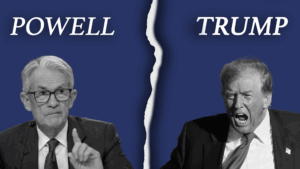Now that you know “What The Hell Is A Stock” and “What The Hell Is A Dividend“, it’s time to get more in depth.
D/E Ratio stand for Debt to Equity Ratio.
It basically means; how much of the debt a company has, is actually covered by the company’s equity.
Here’s A Simplified Example
Let’s say you have 100,000 EGP that you go and locked in as a CD (Certificate of Deposit) in a bank. That money, is your Equity.
Now you need some liquidity, but that money is stuck in the CD. You have 2 options:
A) You break that CD before maturity and lose a percentage of your deposit.
B) You can take a loan against it, using the CD as collateral.
So let’s say you take a loan of 50,000 EGP against your CD. That right there, is your Debt.
That means you took a loan equivalent of 50% of your locked CD, making your D/E Ratio = 0.5
D/E Ratio = Total Debt ÷ Total Equity
It’s standard practice that companies take loans. These loans are used for further expansions and improvement.
Seeing a company has outstanding debt, is not necessarily a bad sign. The real question becomes: How much debt?
Is 100,000,000 EGP debt bad? If the company’s equity is 50,000,000 EGP, then yeah it’s bad. But if their equity is 20,000,000,000 EGP, then it’s nothing.
This is why we use the D/E Ratio
It measures the company’s ability to settle its debt, when needed, without having to sell their buildings, machinery, or anything necessary for its core operation.
What’s An Acceptable D/E Ratio?
Warren Buffet prefers D/E Ratio of 0.5 or under. Meaning, he wants to see that their debt is only half of their equity at max, and that they have enough to settle it twice, if not more.
But that’s Buffet!
He’s dealing with U.S. based businesses, that have already completed their growth phase, mostly already expanded in every market, and there’s no more land to explore (think Coca-Cola)
For me, personally, I’m ok with D/E Ratio up to 1
Egypt is an expanding and growing market. Companies still have a lot more to explore, and more places to visit. I am willing to accept the extra risk for more probable higher reward.
There’s An Exception
Although Buffet prefers D/E ratio below 0.5 and I’m ok with up to 1, this is not set in stone.
In some situations, a company could have a ratio above the threshold, and still be a good investment decision.
If you can specifically pinpoint why this company has high ratio, if it’s an ongoing or just a short period situation, and it make sense to you.
For example, BANKS usually have way higher D/E ratios. After all, customer deposits are debts that the bank takes. Low D/E ratio would mean that people are not using this bank to keep their money, which is a bad indicator
What’s Next?
D/E ratio is just ONE of the key figures to look at when considering an investment. It doesn’t start and end here, but rather it’s one of the many ingredients you need for a proper evaluation.
Our next ingredient would be What The Hell Is C.A.G.R.








